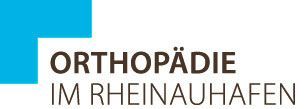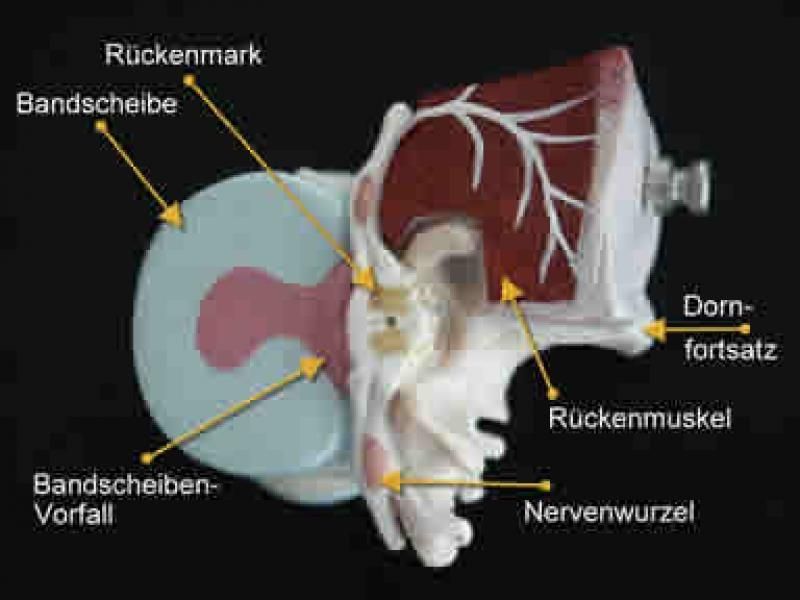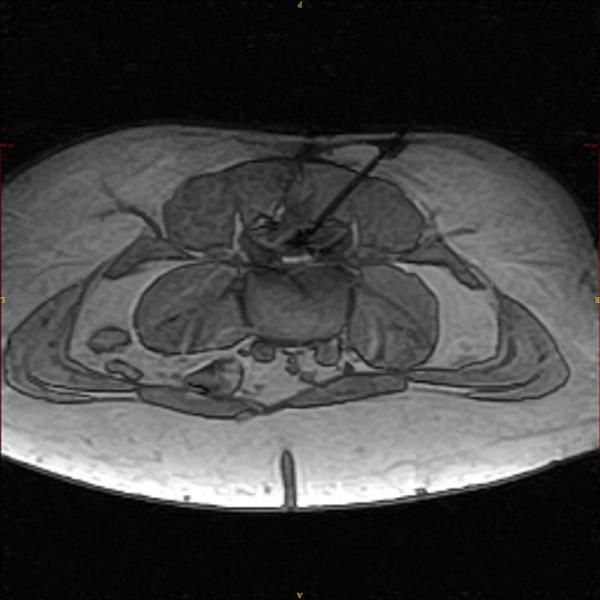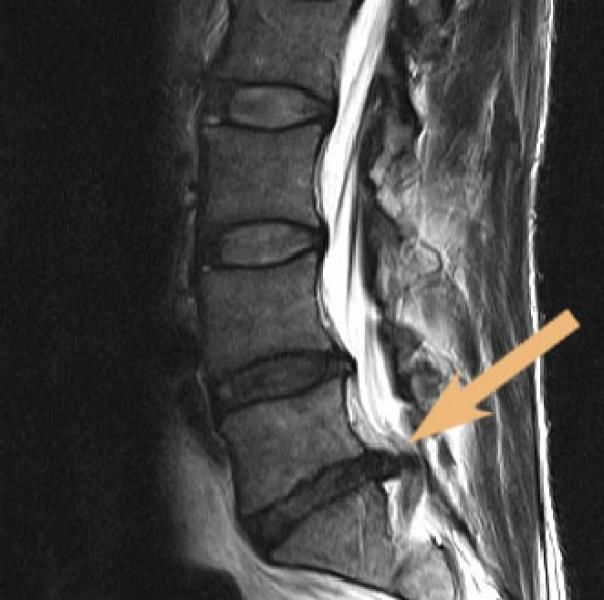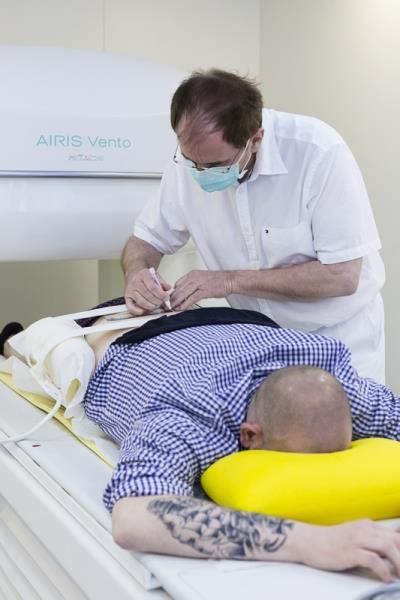Intervertebral Disc Therapy
A large number of young people suffer from back pain, often caused by herniated discs. Today, such herniated discs can be quickly detected and precisely localised using modern examination techniques such as magnetic resonance imaging (MRI). This is the prerequisite for efficient therapy.
What does MRI-guided PDI therapy (Peridual Infiltration Therapy) do?
In the above-mentioned examination, anti-inflammatory drugs are injected into the immediate vicinity of the herniated disc and the inflammatory process. The inflammation subsides and the swelling is reduced. This also improves the blood circulation in this area. The healing process begins, and even if there is an initial protrusion of disc tissue, the patient has no longer any pain.
How is MRI-guided PDI therapy performed? MR-guided pain therapy is a particularly precise procedure. For example, magnetic resonance imaging planning in the patient's prone position, guides fine needles with millimetre precision to painful structures such as vertebral joints or nerve roots and, if necessary, to a herniated disc. After checking the needle position, the vertebral joints, for example, are infiltrated or a nerve root is injected with anaesthetic and anti-inflammatory drugs. Of course, before the start of any therapy, a precise analysis of the pain is carried out by questioning the patient about his pain pattern. These findings are then compared with the results of an MRI examination. Conventional X-ray examinations have only a very limited informative value here.
Classical targets of MRI therapy are:
- The nerve roots in sciatic pain, which radiate into the leg according to the affected disc segment; causes are mostly disc protrusions and disc herniations or wear-related bony constrictions of the spinal canal or the nerve root exit holes = MRT-guided periradicular therapy ("MRT-PRT")
- The joints of the spine, which are also referred to as joint facets, and in the event of overloading due to intervertebral disc damage or wear and tear tend to trigger local back pain, possibly with radiation into the hip or groin or also blockages ("lumbago") = MRI-controlled facet therapy (facet arthrosis)
- Occasionally the sacroiliac joints as a cartilaginous connection between sacrum and pelvic blades; the cause of the pain is usually wear and tear, weakness of the ligaments or they occur reactively when the lower lumbar intervertebral discs become diseased (MRI-guided ISG infiltration).
After 2-4 treatments a response of the therapy can be expected. Up to 90% of the patients experience a complete and long-term elimination of the symptoms.
As these injections are performed under magnetic resonance imaging (MRI) control, the patient is not exposed to any harmful radiation.
Rare Side Effects of PDI
Side effects and complications are very rare in this procedure. As with all injection techniques, a small bruise may occasionally occur in the area of the needle. Side effects are possible from the side of the used medication, if no autologous blood is used. Allergic reactions are conceivable, for example, due to the contrast agents used. If cortisone preparations are used, the known side effects may occur. If risks such as bleeding tendency or thrombosis are known, the doctor should be informed in advance. However, serious adverse side effects have not yet occurred with this method.
Orthopedics in the Rheinauhafen
Im Zollhafen 6, 50678 Köln, Deutschland
